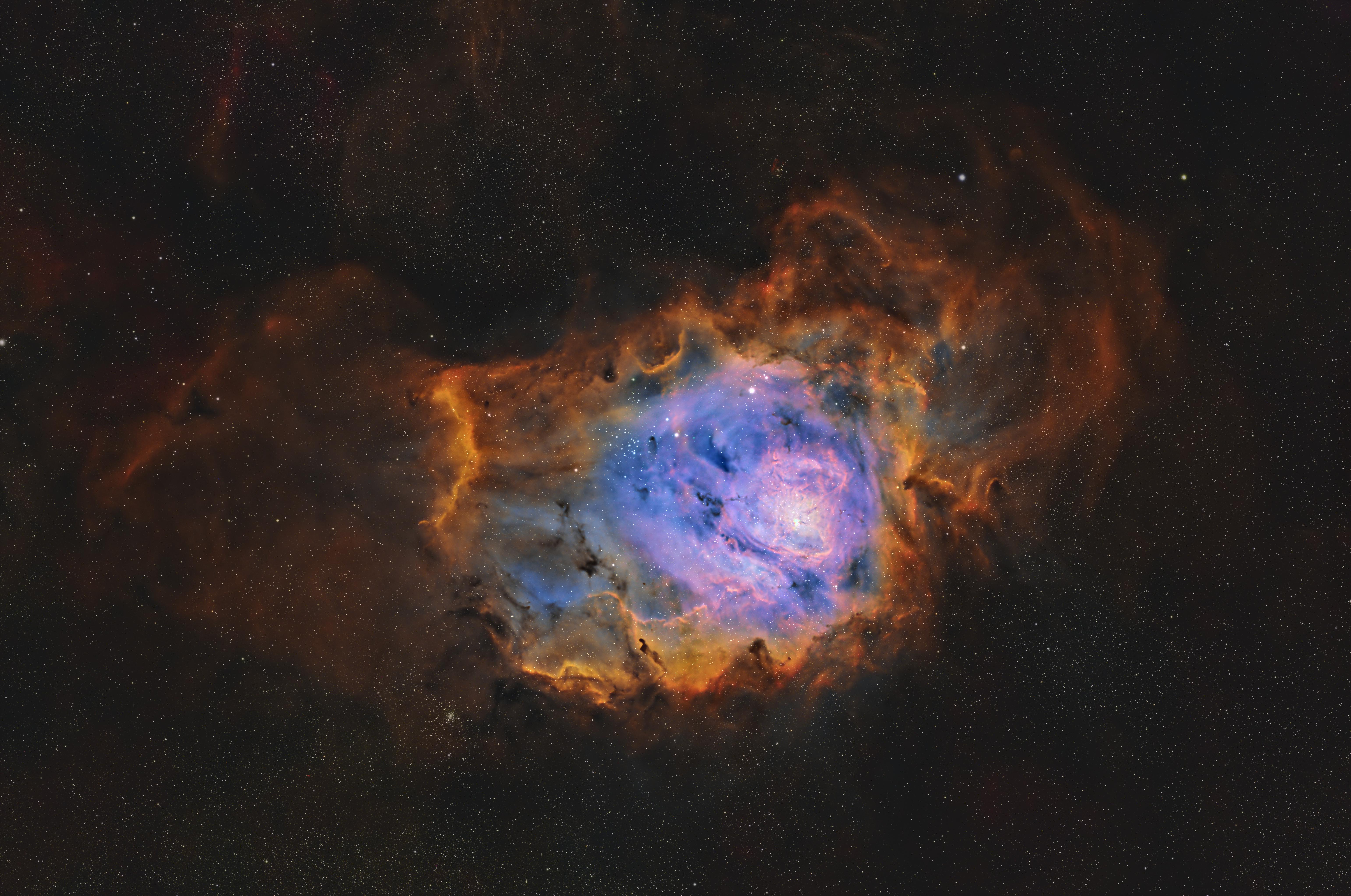Lagoon Nebula (M8) - SHO
Spectacular emission nebula in Sagittarius with SHO narrowband processing

Click to explore in full resolution
Technical Specifications
Resolution: 6000x4000
Integration: 58 subexposures each: Ha, SII, OIII × 180s
Captured: Single night capture
Equipment: Redcat71 refractor (350mm) with ZWO ASI2600MM Pro camera on Advanced VX mount
Location: Henry W. Coe State Park, California (Dark Sky Site)
Processing Workflow
Scientific Context
The Lagoon Nebula (Messier 8) is one of the most spectacular emission nebulae visible from Earth, located approximately 4,100 light-years away in the constellation Sagittarius. This stellar nursery spans about 110 light-years across and is one of the few star-forming regions visible to the naked eye from mid-northern latitudes.
The nebula is characterized by its distinctive dark lane that appears to divide the nebula in two, giving it its "lagoon" appearance. This dark lane is composed of dense dust that absorbs the light from the glowing gas behind it. The bright regions are primarily hydrogen gas ionized by the intense ultraviolet radiation from young, hot stars within the nebula.
This SHO (Sulfur-Hydrogen-Oxygen) narrowband image reveals the complex structure of ionized gases throughout the nebula. The technique captures emission lines from hydrogen-alpha (656nm), sulfur-II (672nm), and oxygen-III (501nm), which are then mapped to create the distinctive color palette that reveals different physical processes occurring within the nebula.
The Lagoon Nebula is an active star-forming region, containing several Bok globules - small, dense clouds of dust and gas that may eventually collapse to form new stars. The nebula also contains the young open star cluster NGC 6530, whose hot, massive stars illuminate and shape the surrounding gas clouds through their stellar winds and radiation.